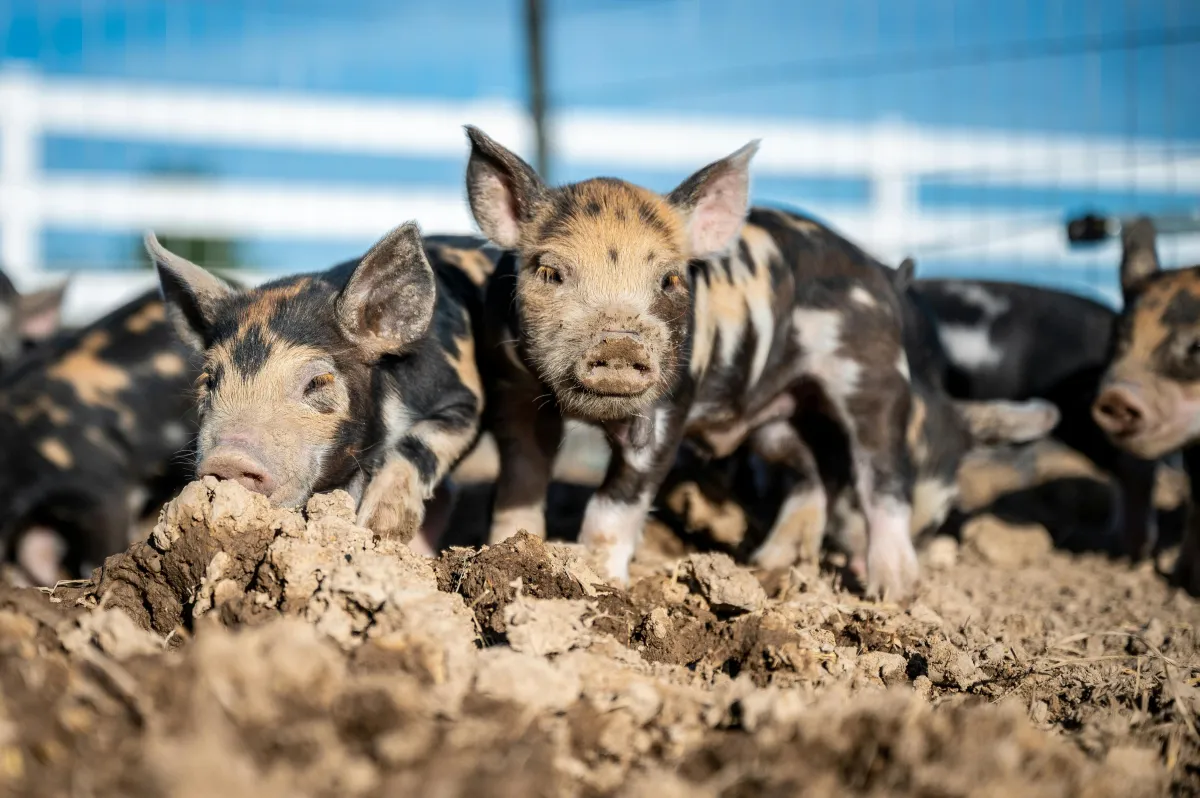
Discover the Best Pig Breeds for Meat Production
Best Pig Breeds for Meat: How to Choose Top Breeds for Quality Pork and Flavor
At Middle Mountain Farmstead, selecting the right pig breed goes beyond raising livestock—it’s about building a system rooted in flavor, hardiness, and sustainability. Different pig breeds yield different cuts, fat content, and taste profiles, making breed choice essential for high-quality meat production. Whether you're running a smallholding, managing a pasture-based herd, or shopping for a better pork chop, here’s what you need to know about choosing pigs for premium pork.
What Are the Top Pig Breeds for High-Quality Meat Production?
Certain pig breeds are known across North America for their high-quality meat, marbled fat, and suitability for pasture-based systems. These include:
Berkshire
Duroc
Chester White
Landrace
Tamworth
Large Black
Guinea Hog
Hereford
Mulefoot
Wessex Saddleback
Piétrain
These pigs offer a wide range of qualities from lard production to lean pork loin cuts. Breed genetics, environment, and selective breeding contribute to meat texture, marbling, and flavor. Crossbreeding can enhance traits like weight gain, maternal ability, and stress resistance.
Why Is Berkshire Pork a Farmer Favorite?
Berkshire pigs produce some of the most sought-after pork in the world:
Incredibly tender, marbled meat
High lard content for flavor and juiciness
Deep red meat resembling a steak cut
Recognized by the National Pork Board and breed registries, Berkshire is the gold standard in heritage pork. They’re ideal for pork chops, pork belly, and roasts.
What Makes Duroc and Chester White Strong Meat Producers?
Duroc: Known for rapid weight gain, balanced temperament, and rich flavor. Excellent pork loin and rib production with a moderate fat cap.
Chester White: A hardy, maternal breed producing well-muscled pigs with good growth rates. Often used in crossbreeding for high-quality pork.
How Do Landrace, Yorkshire, and Piétrain Compare?
Landrace: Known for its long body and large litters. Produces lean, white meat.
Yorkshire: Excellent mother, reliable milk producer, often used to add growth efficiency.
Piétrain: Muscular breed known for leanness but sensitive to porcine stress syndrome (PSS). Often used for crossbreeding to improve carcass yield.
What Are the Qualities of Heritage and Rare Breeds Like Tamworth and Mulefoot?
Tamworth: Ideal for bacon. Long-bodied, great for foraging, with a rich, nutty taste enhanced by acorn- or plant-based diets.
Mulefoot: Rare breed with a solid hoof. High lard yield, flavorful red meat, and strong instinct for rooting and grazing.
Guinea Hog: Compact, docile, and a top choice for small farms. Produces red meat with high fat content—great for pork belly, sausage, and lard.
Why Consider the Large Black and Wessex Saddleback?
Large Black: Hardy with dark skin to resist sunburn. Known for rich fat, good temperament, and pasture performance.
Wessex Saddleback: A rare British breed thriving in rotational grazing systems. Offers juicy red meat and excellent pork chops.
How Do Genetics and Attributes Influence Meat Quality?
Selecting pigs for flavor and yield means understanding:
Marbling: Fine streaks of intramuscular fat that enhance tenderness and taste.
Lard Content: Vital for sausage, charcuterie, and traditional cooking.
Temperament: Calm pigs reduce stress-related meat issues.
Skin & Color: Red or black-skinned pigs fare better in outdoor systems and show stronger resistance to sunburn.
Stress impacts meat texture and flavor. Avoiding PSS is key in breeds like Piétrain or Yorkshire crosses. Good fencing, herd dominance awareness, and handling reduce stress levels and support high-quality outcomes.
Which Breeds Excel in Specific Pork Cuts?
Bacon & Pork Belly:
Tamworth
Guinea Hog
Large Black
Mangalitsa (lard-heavy)
Pork Chops & Loin:
Berkshire
Duroc
Chester White
Wessex Saddleback
Ham & Ribs:
Hereford
Landrace-Yorkshire Cross
Piétrain (when stress is managed)
How Do Pasture and Climate Affect Breed Choice?
Climate, forage availability, and land conditions all influence which pig thrives. Breeds with strong foraging instincts (Guinea Hog, Tamworth, Large Black) adapt well to rotational paddocks, acorn-rich woodlots, and seasonal grazing.
Pigs raised outdoors often produce tastier meat due to diverse forage, exercise, and lower stress. Their diet—including grass, root crops, milk, and even fallen fruit—adds layers of flavor you can’t get from confined commercial swine.
What Sustainable Practices Support Better Pork?
At Middle Mountain Farmstead, we emphasize:
Rotational Grazing: Promotes pasture health and natural behavior.
Selective Breeding: For hardiness, maternal instinct, and flavor.
Free-Range Access: Encourages healthy movement and reduced stress.
Organic Supplements: When needed, we add plant-based nutrition, not commercial growth enhancers.
These methods ensure pork that’s flavorful, nutrient-rich, and aligned with our stewardship values.
Cooking Tips for Premium Pork
Knowing the breed enhances your experience in the kitchen:
High-lard breeds: slow roast, cure, or smoke (Guinea Hog, Mangalitsa)
Leaner breeds: brine, grill, or sauté quickly (Piétrain, Landrace)
Red meat breeds: treat like beef or steak for deeper flavor (Berkshire, Mulefoot)
Favorite dishes from our farm include:
Smoked Guinea Hog bacon
Berkshire pork chop with herb crust
Mulefoot sausage and beans
Tamworth ham roasted with acorn glaze
Final Considerations for Breed Selection
Think about:
Your Climate: Heat-hardy pigs need darker skin and good foraging ability.
Your Market: Are you selling lard, pork chops, or whole animals?
Your Priorities: Do you want fast growth (Duroc), rare breed appeal (Mulefoot), or stress resistance (Landrace)?
Your Space: Smaller pigs like Guinea Hogs are perfect for homesteads and smallholdings.
Breeds aren’t one-size-fits-all. Balance temperament, carcass yield, and ethical farming in your decision-making.
Where to Learn More
Explore these resources to dive deeper:
The Livestock Conservancy (rare breed preservation)
National Pork Board (breed stats and meat quality)
Breed registries for Berkshire, Chester, Mulefoot, and others
YouTube tours and pig breed spotlights
Farm tours at Middle Mountain are available seasonally—we’re proud to share our pigs, our kitchen, and our approach to sustainable, high-quality pork.
Final Thoughts
Whether you're breeding pigs for your homestead or selecting cuts at a farmers market, breed matters. Flavor, marbling, temperament, and sustainability all begin with genetics. At Middle Mountain Farmstead, we raise animals with purpose—honoring heritage, respecting instinct, and providing meat that’s a joy to cook and eat. Come visit. Ask questions. And taste the difference that good breeding makes.